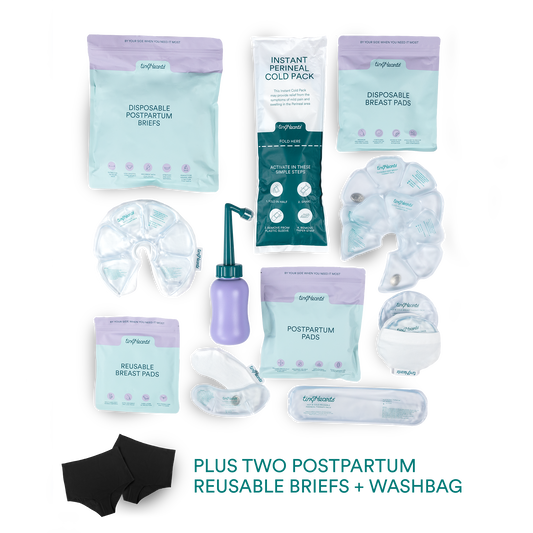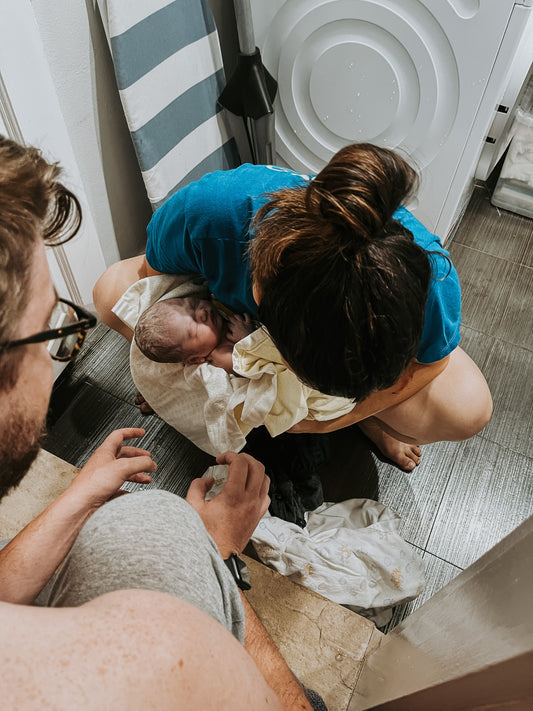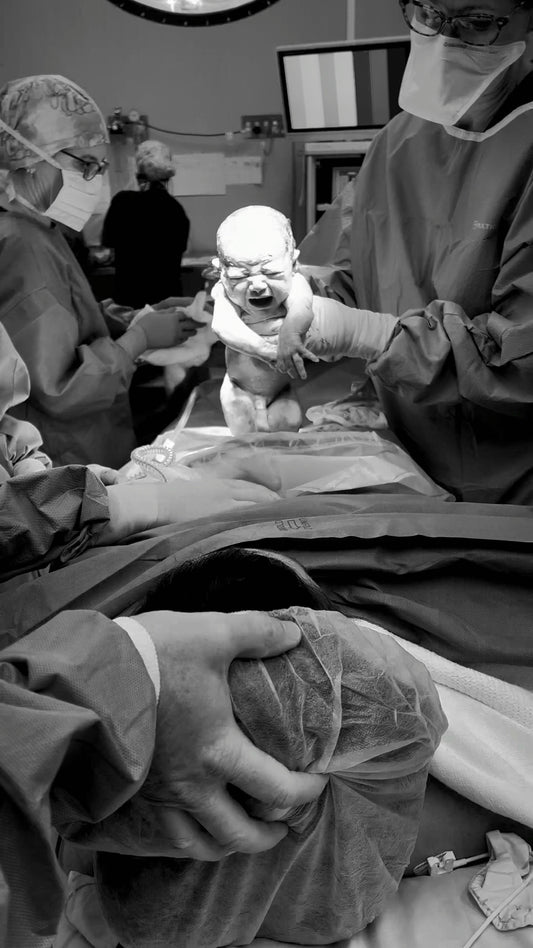When Jessica welcomed her daughter Caroline into the world in May 2023, she was tiny, perfect and seemingly healthy.
Two days later, Caroline failed her newborn hearing test.
A week after that, Jessica heard a diagnosis she had never even heard of before: congenital CMV.
Jessica was not warned about CMV during pregnancy.
She was not tested for it.
She did not even know it existed.
Today, Caroline is medically complex, living with:
- Unilateral hearing loss
- Seizures
- Spastic quadriplegic cerebral palsy
- Microcephaly (a smaller-than-average head size)
- Global developmental delays
- Respiratory and airway issues
- G-tube dependence
- Non-speaking communication needs
She receives regular physiotherapy, occupational therapy and speech therapy to support her development.
But Caroline is not defined by her diagnosis. She is light and joy. She adores her swing, Mickey Mouse and the glow of lights. Her favourite moments are when her big sister walks into the room. She has taught her family what love, strength and resilience truly look like.
Jessica shares her story not to scare parents, but to empower them with the knowledge she wishes she had before Caroline was born.

What is CMV During Pregnancy?
CMV stands for cytomegalovirus. It is a common virus that usually causes mild or no symptoms in healthy people.
If a woman contracts CMV for the first time during pregnancy, it can cross the placenta and infect the baby. This is called congenital CMV and it can cause life-changing complications.
In Australia, only 14% of women aged 20 to 40 have ever heard of CMV, yet it is the leading infectious cause of lifelong disabilities in babies, affecting about 1 in every 150 newborns.
How CMV Spreads and Why Pregnant Women Are at Risk
CMV spreads through bodily fluids such as saliva, urine, mucus and breast milk.
Toddlers and young children, especially those in daycare, are often the main source of infection for pregnant women.
Everyday, loving actions can unknowingly spread CMV, including:
- Sharing food, drinks or cutlery with your toddler
- Giving kisses on the lips
- Wiping their nose without washing hands afterwards
What CMV Can Do to a Baby's Health
Many babies born with CMV appear healthy at birth. About 1 in 5 will develop long-term complications, which may include:
- Hearing loss
- Vision problems
- Seizures
- Cerebral palsy
- Microcephaly
- Developmental delays
- Feeding difficulties
- Breathing and airway complications
Can CMV Be Treated?
If congenital CMV is diagnosed early, ideally within the first 21 days of life, some babies may benefit from antiviral medication. This can help reduce the severity of symptoms.
However, prevention remains the most powerful tool we have. Once damage is done during pregnancy, it cannot be reversed.
How to Prevent CMV During Pregnancy
While CMV cannot always be prevented, these steps can significantly lower your risk:
- Avoid sharing food, drinks, cutlery or toothbrushes with toddlers and young children
- Wash hands thoroughly after changing nappies, wiping noses or handling toys
- Kiss children on the forehead instead of the lips
- Clean toys, dummies and highchair trays regularly
- Talk to your doctor or midwife about CMV and whether testing is an option for you
Why You Might Not Have Heard of CMV Before
Despite its impact, CMV is not part of routine pregnancy education in Australia.
- Most antenatal classes and checkups do not include it
- Many health professionals are not required to mention it
- CMV is not part of Australia's standard antenatal screening process
This means thousands of pregnant women are at risk every year without knowing how to reduce it.
Spreading Awareness Can Save Lives
If just one pregnant woman reads this and learns about CMV, something good has come from Caroline's journey.
Every parent deserves to know what Jessica did not.
Every baby deserves the best possible start.
You can follow Caroline's journey on Instagram at @carolines_cmv_journey for more updates, insights and support.
Thank you Jessica and Caroline for bravely sharing your story with us.
Sources:
- Royal College of Obstetricians and Gynaecologists. Congenital Cytomegalovirus Infection: Update on Screening, Diagnosis and Treatment. Scientific Impact Paper No. 56. 2023. https://www.rcog.org.uk
- NSW Health. Cytomegalovirus (CMV) Fact Sheet. https://www.health.nsw.gov.au
- Cerebral Palsy Alliance. CMV Awareness Month 2025. https://cerebralpalsy.org.au
- JAMA Network Open. Birth Prevalence of Congenital CMV Infection in High-Income Countries: A Systematic Review and Meta-analysis. 2021. https://jamanetwork.com
- MDPI Pharmaceuticals. Congenital Cytomegalovirus Infection: Advances in Diagnosis and Treatment. 2021. https://www.mdpi.com
- Children's Health Queensland. Congenital Cytomegalovirus (CMV) Clinical Guideline. https://www.childrens.health.qld.gov.au







